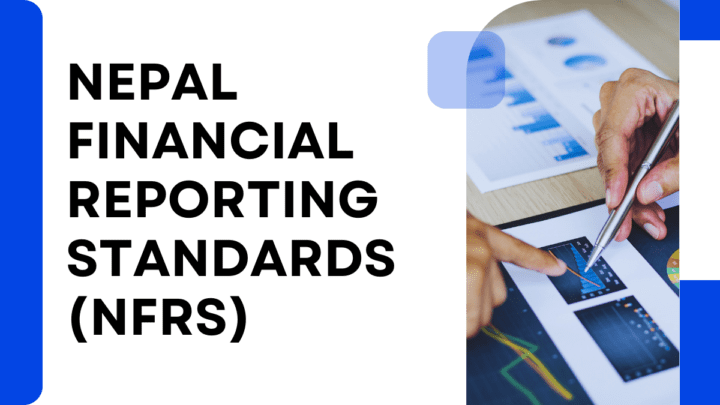
The Nepal Financial Reporting Standards (NFRS) serve as a common global language for business affairs within Nepal. These standards ensure that company accounts are comparable, understandable, reliable, and relevant to internal and external users. Here are some key points about NFRS:
- Scope and Purpose:
- NFRS provides guidelines for maintaining books of accounts by accountants.
- The goal is to create financial statements that are consistent, transparent, and useful for decision-making.
- Applicability:
- NFRS applies to various types of entities based on their characteristics and size.
- The adoption timeline varies for different categories of entities:
- Listed Multinational Manufacturing Companies and Listed State-Owned Enterprises (SOEs) with a minimum paid-up capital of Rs. 5 billion adopted NFRS in 2014-15.
- Commercial Banks, other Listed SOEs, and Financial Institutions adopted NFRS in subsequent years.
- NEPAL ACCOUNTING STANDARD FOR MICRO ENTITIES (NAS FOR Mes) adopted NFRS in 2024.
- Specific Standards:
- NFRS covers a range of accounting topics, including:
- Presentation of Financial Statements (NAS 1)
- Inventories (NAS 2)
- Statement of Cash Flows (NAS 7)
- Accounting Policies, Changes in Accounting Estimates & Error (NAS 8)
- Construction Contracts (NAS 11)
- Revenue Recognition (NAS 18)
- Impairment of Assets (NAS 36)
- Fair Value Measurements (NFRS 13), and more.
- NFRS covers a range of accounting topics, including:
- Conceptual Framework:
- The Conceptual Framework for Financial Reporting underpins NFRS, providing fundamental principles and concepts for preparing financial statements.
NFRS aims to enhance transparency, comparability, and reliability in financial reporting, benefiting businesses and stakeholders. For more detailed information, refer to the official Institute of Chartered Accountants of Nepal (ICAN) NFRS page.
| S.N. | NFRSs | Name of Standards |
|---|---|---|
| Preface | ||
| Conceptual Framework | ||
| 1 | NAS 1 | Presentation of Financial Statements |
| 2 | NAS 2 | Inventories |
| 3 | NAS 7 | Statement of Cash Flows |
| 4 | NAS 8 | Accounting Policies, Changes in Accounting Estimates & Error |
| 5 | NAS10 | Events after the Reporting Period |
| 6 | NAS 11 | Construction Contracts |
| 7 | NAS 12 | Income Taxes |
| 8 | NAS 16 | Property, Plant & Equipment |
| 9 | NAS 17 | Leases |
| 10 | NAS 18 | Revenue |
| 11 | NAS 19 | Employee Benefits |
| 12 | NAS 20 | Accounting for Government Grants & Disclosure of Government Assistance |
| 13 | NAS 21 | The Effects of Changes in Foreign Exchange Rates |
| 14 | NAS 23 | Borrowing Cost |
| 15 | NAS 24 | Related Party Disclosures |
| 16 | NAS 26 | Accounting & Reporting by Retirement Benefit Plans |
| 17 | NAS 27 | Consolidated and Separate Financial Statements |
| 18 | NAS 28 | Investments in Associates |
| 19 | NAS 32 | Financial Instruments : Presentation |
| 20 | NAS 33 | Earnings Per Share |
| 21 | NAS 34 | Interim Financial Reporting |
| 22 | NAS 36 | Impairment of Assets |
| 23 | NAS 37 | Provisions, Contingent Liabilities and Contingent Assets |
| 24 | NAS 38 | Intangible Assets |
| 25 | NAS 39 | Financial Instruments: Recognition and Measurement |
| 26 | NAS 40 | Investment Property |
| 27 | NAS 41 | Agriculture |
| 28 | NFRS 1 | First-Time Adoption of Nepal Financial Reporting Standards |
| 29 | NFRS 2 | Share based Payment |
| 30 | NFRS 3 | Business Combination |
| 31 | NFRS 4 | Insurance Contracts |
| 32 | NFRS 5 | Non-Current Assets Held for Sale & Discontinued Operation |
| 33 | NFRS 6 | Exploration for and Evaluation of Mineral Resources |
| 34 | NFRS 7 | Financial Instruments: Disclosure |
| 35 | NFRS 8 | Operating Segments |
| 36 | NFRS 9 | Financial Instruments |
| 37 | NFRS 10 | Consolidated Financial Statements |
| 38 | NFRS 11 | Joint Arrangements |
| 39 | NFRS 12 | Disclosure of Interests in other Entities |
| 40 | NFRS 13 | Fair Value Measurements |
